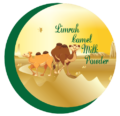Frequently Asked Questions
- Why Camel milk is a super-food?
Camel milk contains unique proteins, a higher percentage of calcium, magnesium, phosphorus, potassium, sodium, iron and copper. Excellent for good health of the gut
Camel milk is consisting of good fat and full of Immune booster
Good for diabetes, heart, used in treating Autism and many other diseases
- How does the Camel Milk taste like?
Camel milk has a different sweetish taste with a salty touch
- What is the Difference between Camel milk and Cow milk?
Camel milk has healthy fats when compared to cow’s milk, which helps in reducing cholesterol and maintaining healthier cardio-vascular function. Camel milk is 3 times higher in immune-boosting vitamin C when compared to cow’s milk and due to the lack of allergenic beta-casein in Camel milk, it is a very safe alternative to cow milk with very little to no uncomfortable side effects associated with lactose intolerance.
- Does powdered camel milk have fewer benefits compared to liquid camel milk?
Limrah Camel Milk powder is pasteurised and freeze-dried with the best design method which preserves the nutrients and flavour of camel milk which will be similar to fresh milk with an extra benefit of easy storage and transport.
- How to make liquid milk from Limrah camel milk powder?
To achieve a consistency mixture, use a blender or a handheld mixer or milk frothier. Using warm water is the best way to re-hydrate milk powder. 2 tablespoons (20 grams) of powder mixed into 200 ml (one cup) of warm water makes nearly a quarter litre whole camel milk.
- Is camel milk thick as cow milk?
camel milk is thinner and less viscous than cow milk it becomes frothy and looks thicker when shaken vigorously
- What is the shelf life powdered milk?
Fresh Camel milk shelf life is a couple of weeks but camel milk powder has a shelf life of one year.
- Who can consume Camel milk?
Babies after 12 months of age and the whole family can have camel milk for a healthier life
- What is the required amount of camel milk to be healthy?
for maximum support, 2 tablespoons (20 grams) of Camel milk powder twice a day, 10-15 minutes before a major meal or 2 hours after a meal to avoid stomach acid which is the recommendation of consuming any milk. If it is a very sensitive individual or child of 1-year old age start with 1 teaspoon daily and slowly make your way up to an easy-going amount.
- Can we use camel milk for cooking?
Yes, camel milk can be used in cooking, baking, smoothies, protein shakes, cold drinks, coffee, tea and to make ice cream. Please refer to the recipes section for different ideas for healthy eating.
- Are there any side effects of Camel Milk?
There are no side effects of camel milk, however, every individual is different and our body reacts differently. Few people may experience runny tummy, but not to worry about, as this is the way camel milk starts detoxifying the body naturally and it will settle down soon. If you experience it for more than 3 days stop it immediately and consult your GP. It’s better to start slowly by consuming diluted one cup of camel milk every day for 2 weeks and then increase the intake gradually.
- Where do we source camel milk from?
Currently, we are sourcing our fresh camel milk from traditional camel herd owners of India who are rearing camels for generations, and they know the requirements of Camels exactly and they feed them in open and mostly on unique medicinal plants which are traditionally used in medication for centuries
- Why is camel milk expensive than Cow’s milk?
Compared to the cow, camel produces significantly low quantity of milk for a small period and high input cost.
If you have any other questions, please do not hesitate to get in touch with us and we will be happy to assist you.

Quality-Value-Satisfaction

FAQ
Here are few common questions regarding camel milk, please get in touch with us should you need more details.
